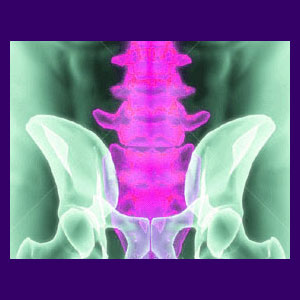
Finding relief from sacroiliac pain is typically a difficult goal to achieve, since so many SI joint concerns become chronic problems. The sacroiliac joint normally degenerates, just like all the major joints in the body. Arthritic changes are commonplace, as people age, as are ligament irregularities.
However, the SI joint has become quite a popular object of blame in the back pain treatment sector, especially in the absence of a more tangible spinal abnormality, such as a lumbar herniated disc or spinal osteophyte complex.
The sacroiliac is one of the most resilient joints in the entire body and medical statistics show that it is only truly responsible for causing pain in a small minority of diagnosed patients. Therefore, this discussion helps to clarify the true reasons for pain in many misdiagnosed patients.
Relief from Sacroiliac Pain Truths
The sacroiliac joint is best known for experiencing pain due to injury. However, this joint is extremely difficult to damage and most patients will suffer a shattered pelvic bone before the SI joint will endure any noticeable injury. The joint is truly that strong.
Arthritic degeneration of the joint itself is also blamed for enacting symptoms in some patients, but this is no more enlightened of a causative theory, since the same arthritic processes, which are rarely symptomatic in the rest of the body, have even less effect on the SI joint. Research shows that most arthritic change in the SI joint is not symptomatic to any large degree in the overwhelming majority of patients.
Of course, many doctors know and understand these facts, so it is also typical that SI joint concerns are blamed on the ligaments in the joint, making verifiable diagnosis far more of a subjective matter. Some patients are diagnosed with having ligaments that are overly taut, while just as many are diagnosed with ligaments that are overly lax. Ironically, symptoms are said to be the same, regardless of the diagnostic theory pronounced. Something definitely seems wrong with this (lack of) logic.
Relief from SIJ Pain Impediments
The SI joint is often blamed for causing hip pain, lower back pain and sciatica. Very few patients are labeled with a sacroiliac joint diagnosis right away, but instead often flounder their way through the back pain treatment process, without success, for months, or even years, before the possibility of an SI joint concern is raised.
Diagnosis of SI joint concerns is common among chiropractors, more than by traditional physicians. Often, diagnostic imaging will show mild to moderate joint degeneration, typical of the shoulder, hip, spine, knee or anywhere else in the body. Although this degeneration is usually coincidental, it is often cited as the source of pain, which is accepted by most patients, since they do not understand the practically universal nature of normal joint aging and the associated structural changes.
Achieving Relief from Sacroiliac Pain
Many SI joint pain diagnoses are “verified” by injecting an anesthetic into the joint and seeing if it provides relief. This is an incredibly inaccurate diagnostic procedure, especially when there is speculative evidence of an underlying structural issue, since the anesthetic can affect a wide area and deaden pain from a variety of causative issues.
Be very careful with SI joint diagnoses, since in our experience, many turn out to be incorrect and some are utterly ridiculous. Always seek out a second opinion from an objective care provider, who is not prone to simply agreeing with the original diagnostician and sending you on your way.
In rare instances where arthritic deterioration is the true source of symptoms, a wide range of treatments may be useful, including manipulation, physical therapy, the simple passage of time or even surgical intervention. In even more uncommon instances of true ligamentous injury, tension or laxity, physical therapy is usually the most effective treatment choice.





